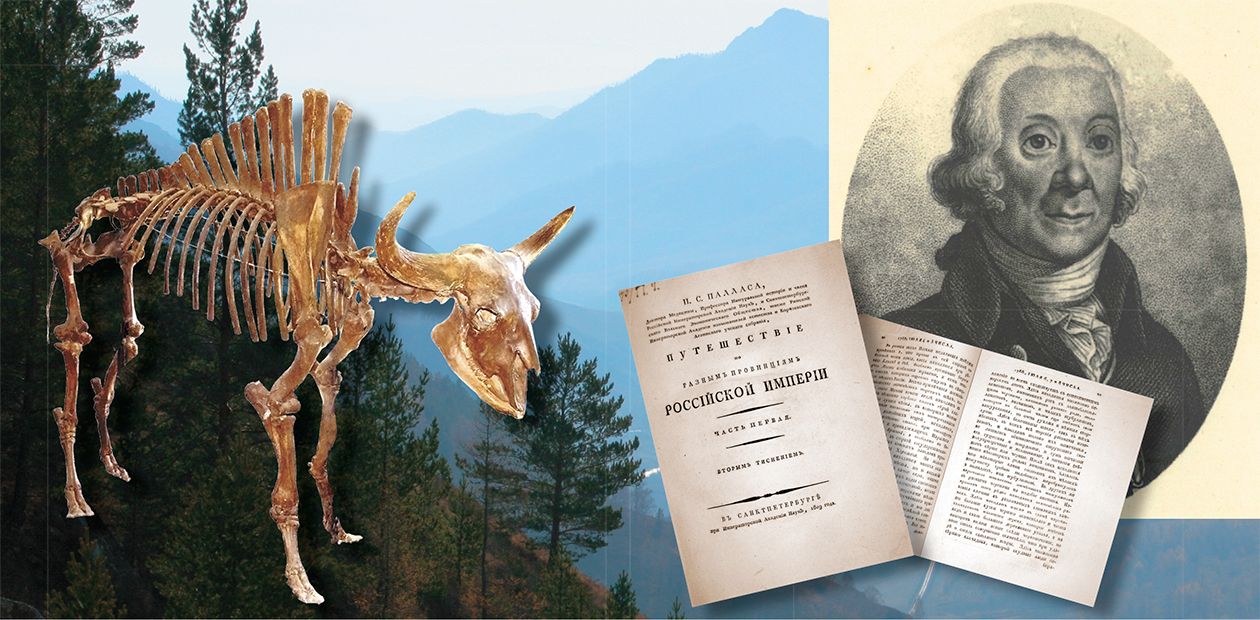The First Researchers of the Altai Caves
Presently, the Altai mountains host quite a number of joint research teams including experts in archaeology, geology, archeo-zoology and archeo-botany. Due to this multidisciplinary research in Altai caves, it has become possible to gain the most reliable and rich scientific data on the earliest human history and early human living conditions in Siberia. Excavations at such caves as Denisova, Okladnikov, Strashnaya, Ust-Kan and Kaminnaya have yielded the most interesting information on the remote past of this area.
Rich archaeological collections have been recovered from these sites. Beyond archaeological artefacts, the cave sites contained accumulations of bones of Pleistocene animals. Soil samples containing pollen and spores of ancient vegetation, as well as other organic remains, have been collected from cave soft sediments for analyses. The information obtained allows for recognition of development of both early human culture and of the evolution of animals and plants, as well as the development of landscapes and climate, throughout the latest several hundred thousand years.
First Steps
Multidisciplinary research of the Altai caves as natural-historical complexes began recently enough, in the second half of the 20th century. Prior to this, there was a long period of gradual accumulation and comprehension of facts.
Studies of Siberian relics began as early as in the first quarter of the 18th century. D. G. Messerschmidt organized an expedition to Siberia in 1719 — 1727. Together with F. I. Tabbert, he collected data on features of nature and environment along with information on ways of living and languages of Siberian peoples as well as on monuments of earlier periods and “other interesting things and showplaces” of this region.
On January 5—6, 1722, an unusual time for archaeological work in Siberia, Messerschmidt began excavations of one of the burial mounds on the left bank of the Yenisei, in the vicinity of the town of Abakan. He made a detailed description of the site and provided his records with graphical sketches of the burial construction. It was the first scientific excavation that gave birth to archaeological studies of Siberia.
Messerschmidt was the first scientist who paid attention to archaeological monuments in the steppe piedmonts of the Altai. Passing through the Baraba steppe in 1721, he bought various historic artefacts from ancient tombs. In his diary, Messerschmidt wrote that digging “pagan and Scythian burials” provided local people with a considerable income and that, along with copper, brass and iron things, diggers often recovered gold and silver items: gold and silver bridles, weaponry, images of gods and other objects (Messerschmidt, 1962, S. 76—77).
At that time, some parts of the Altai belonged to the Oirat (Jungarian) Khandom. Upon annexation of the Altai territory to the Russian Empire in the second half of the 18th century, intensive economic and cultural exploration of the Altai began. True scientific research started in the Altai with the handover of the Altai industries from Akinfy Demidov to the Cabinet of the Tsarist Government of Russia.
First Mammoths
The Russian Government was interested in learning about the new lands annexed to the state, so many experts in various fields of knowledge were engaged in research in the Altai. Thanks to the joint efforts of members of research expeditions and local scholars, who worked for the mining enterprises of the Kolyvan-Voznesensk (Altai) Province, a large data base on various aspects of natural history of the province including data on the Quaternary period was created. It is noteworthy that archaeological data played an important role in natural resources exploration because many new mines were established in places where ancient mining sites, known as “Chud mines”, had been located.
A report prepared in 1767 by I. I. Leibe, a senior mining engineer of the Kolyvan-Voznesensk mines, can be considered the first document mentioning some relics that were recovered from Pleistocene deposits in the Altai.
In his report, Leibe wrote about a mammoth’s fossils that were discovered by a local citizen in the washed-out sediments of the left bank of the Alei River, on the way from the Zmeinogorski mine to Loktev factory, in 1766. The following spring, Leibe examined the site and discovered a cluster of bones which could be attributed to at least one adult and two young mammoths; the bones were found in the red loam deposits. He made a precise description of the stratigraphic position of the objects as well as of their state of preservation and morphometric features.
Summarizing his description of the fossil fauna, the scholar noted that he preferred to avoid debate concerning the reasons why these “foreigners” had moved to the uncomfortable and even severe Siberia from some distant regions. The author seems to have intentionally avoided discussing the possible migration routes of mammoths, apparently because he reckoned Siberia as mammoths’ original habitat.
Four years later, Academician P. S. Pallas visited the Altai and examined the fossils. The scholar highlighted the significance of Pleistocene deposits for studies of the natural processes of the remote past; he also emphasized the importance of opportune excavations at the site.
First Caves
Pallas was the first scholar who studied the Altai caves. In July 1771, while traveling along the offsets of the Tigiretskii range he explored the middle reaches of the Inya River. In the course of this trip he visited all the accessible karst caves. The cave located three kilometers downstream from the Tigirek mouth proved to be the most informative. The travelers collected a lot of relics including bones of large mammals, six human skulls, and a few wooden and bone tools; these objects were found in the central chamber of the cave and in one of the two side galleries. Publication of these materials was the first scientific record on geology, paleontology, archaeology and physical anthropology of the Altai caves (Pallas, 1786: 286 — 289).
In the first half of the 19th century, studies of the Altai caves were continued by F. V. Gebler, a famous naturalist, Associate member of the Russian Academy of Sciences, medical inspector of the Altai mines, and by A. I. Kulibin, a mining engineer, Director of the Zmeinogorsk mines; he was a son of the famous Russian mechanical innovator I. P. Kulibin.
In 1831, during their trip to the Chagyr mine, they examined two caves located on the right bank of the Charysh. The soft sediments in one of the caves had been almost completely taken away by local people who dug caves in search of hoards and treasures. The other cave was located approximately four kilometers downstream from the first one. Soft sediments were still preserved in some portions of the main chamber of the cave and in the lateral clefts. These clayey sediments yielded teeth, mandibles and femurs of large mammals, mostly horses and other herbivores (Kulibin, 1831; Gebler, 1831).
Kulibin examined one more cave. This cave was located on the right bank of the Khankhara, about twelve kilometers upstream from its joining the Inya, and was filled with clayey sediments more than two meters thick. A rich collection of bones of large and small mammals was recovered from the upper portion of the cave’s soft sediments (Kulibin, 1833).
Some fossils from the Altai faunistic collection were transferred to the Paleontological depositary of the Moscow Naturalist Association, while others were deposited in the Museum of the Mining University. The systematic description of the Mining University’s collection provides the following taxonomic classification of the Altai paleofauna (Pander and Zembnitski, 1833):
Quadriped mammals. Pachyderms: rhinoceros (molars), horse (teeth, mandible fragments, extremity fragments). Regurgitating animals: deer (cranium fragment, teeth, fragmented mandible with teeth, carpus bones, pelvis fragment). Carnivores: hyena (mandible fragments with teeth, canine teeth, humerus, ulna, radius, carpus and femur); cave bear (a fragment of mandible with teeth); wolf (cranium, mandible); grison — a small animal with teeth and lifestyle similar to those of a ferret and behavior similar to that of a bear and a wolverine (crania and femur); cat (mandible fragment and canine teeth of an animal of tiger affinity). Rodents: marmot (crania, mandibles, teeth); hamster (crania, mandibles, teeth). Chiroptera: pipistrelle (bat pelvis). Birds (bones of small birds, no precise taxonomic identification).
In 1834, a special geological survey was executed in the Altai in order to evaluate the natural resources of Lake Teletskoe. G. P. Helmersen, a renowned Russian geologist and head of this expedition, examined the Chagyr caves in the Charysh valley and made a detailed description of topographic and geologic features of these caves. He also classified the fossils that were recovered from the caves and identified such extinct species as a cave bear, wooly rhinoceros and cave hyena (Helmersen, 1848).
First conclusions
Academician F. F. Brandt, a renowned zoologist and founder of the Zoological Museum of the Russian Academy of Sciences, was the first to summarize archaeological materials from “paleontological” caves of the Altai in 1870. After one hundred years of studies of the Altai faunistic remains, 37 species were identified including 16 taxa of extinct animals. Brandt recognized various states of fossil preservation as well as diverse shapes of the bones. By these features he classified all the available bones into three chronological groups. The earliest group included bone remains of a mammoth, wooly rhinoceros, cave hyena, giant deer and urus (Brandt, 1871).
Another outstanding scientist, the Chairman of the Moscow Archaeological Society and an honorary member of the Russian Academy of Sciences A. S. Uvarov, used Brandt’s conclusions in his studies. In 1881, A. S. Uvarov and S.M. Hertzenstein, a curator of the Zooological museum, summarized all the available data on “bone-bearing” caves in the Altai.
Uvarov noted that the Altai faunistic collections did not contain complete skeletons while the number of fractured and damaged bones was considerably large, and the number of carnivore remains was rather small. He concluded that “the Altai caves had not been permanently inhabited by those animals whose bones were recovered from these caves. By all appearances, the bones of carnivore animals, as well as bones of mammoth, rhinoceros and all other animals that had never lived in caves, were brought there by humans as food and raw material for tool production” (Uvarov, 1881: 197).
Thus, Uvarov was the first who interpreted the available paleontological materials in cultural-historical terms. He argued that prehistoric humans inhabited the Altai caves as early as in the Paleolithic. Researchers of the Altai caves faced new challenges that could not be met without joint efforts of experts in various fields of science and humanities.
The work of subsequent generations of scholars has shown that profound studies of the earliest prehistoric periods including interrelationships between human groups and the environment, at various stages of the Quaternary, are impossible without employing a multidisciplinary approach.
Today, large-scale and long-term research has shown that the Altai can be regarded as a cradle of human prehistoric culture in Siberia. Excavations in the Denisova Cave * have yielded the oldest remains of Homo sapiens in Northern Asia as well as one of the world’s best antiquity collections of personal adornments made of animal bones and teeth, mammoth tusk, ostrich egg shell, mollusk shell, and gemstones. Archaeologists are sure that many unique discoveries are still awaiting them in the Altai Caves.
References:
Pallas, P. C. 1786. Puteshestvie po raznym mestam Rossiiskogo gosudarstva. St. Petersburg, part 2, book 2. [Travelling around Russia].
Messerschmidt D.G. 1962. Forschungsreise durch Sibirien. 1720—1727. Berlin, vol. 1: Tagebuchaufreichnungen. Jahnuar 1721—1722. 379 s.
*The Golden Section of the Anui (Science First Hand, 2005, N 1: 56–64)

















